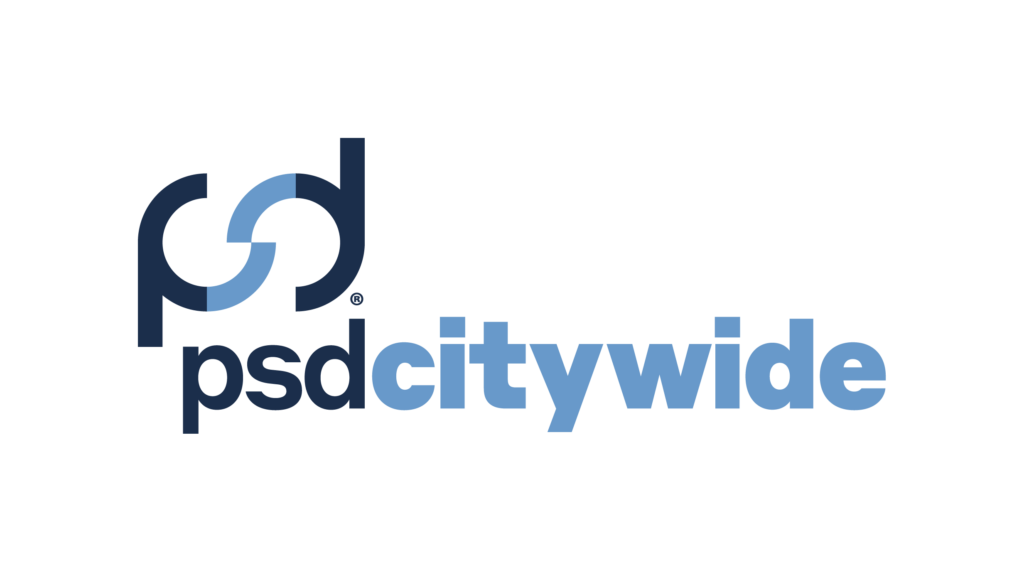A significant portion of a municipal capital and maintenance budget is allocated to annual projects within the municipal right of way (ROW). These projects include the maintenance, rehabilitation, and replacement (MR&R) of roads, sidewalks, catch basins, trees, signs, signals, and underground systems such as water, sewer, and storm mains. Without a holistic decision-making process, it would be very challenging to prioritize, coordinate, and optimize the use of limited budgets across this vast magnitude of project types. Further, potential negative impacts will undermine the municipality’s ability to enhance infrastructure levels of service (LOS) and would cause more inefficiency. Taking into consideration the current and future needs of the municipality, as well as an increasing infrastructure deficit, it is vital to minimize losses and increase the value per project while working toward achieving better infrastructure levels of service.
The Negative Impact of Uncoordinated and Unintegrated Planning
A large number of uncoordinated annual MR&R projects not only leads to negative impacts on the daily activities of residents, but also causes direct and indirect negative impacts on surrounding businesses, industries, social services, and government activities. Negative impacts are not limited to service interruptions but also lead to broader economic, social, and environmental impacts.
For example, traffics delays and detours increase indirect social costs and cause more gas emissions. Additionally, repeating digging, filling, and pavement operations along the same ROW corridor section, (e.g., once for installing a new water pipe, and later to replace an old sewer pipe), can cause significant economic losses. For example, it may negatively impact the service life of the recently installed water pipe, either due to heavy construction machinery impacting the soil surrounding the water pipe or by increasing the chance of accidental pipe breaks. Completing activities without coordinated and integrated planning can also lead to negatively impacting other surrounding assets, like sidewalks.
The Benefits of Coordinated and Integrated Planning
In contrast, coordinating, integrating and optimizing a large number of MR&R projects is expected to minimize service disruption and daily inconvenience, enhance the environment, and minimize overall costs – fiscal, social and environmental. Coordinating the optimization of MR&R interventions throughout the lifecycle of co-located assets includes: (1) optimization within single networks; and (2) optimization and coordination across co-located assets. Having a holistic decision-making (DM) framework for comprehensive MR&R optimization, coordination and integration within and across networks would enhance the overall condition of assets, save duplicated activity costs, and enable better budget utilization to enhance the assets’ condition and extend their service lives.
Having a holistic DM approach would enhance the optimization of risk, budget, and performance within and across the different co-located assets. Hence, achieving the planned infrastructure levels of service (LOS) would be more approachable, feasible, and visible. A holistic DM framework can help the decision-maker to select and prioritize MR&R projects to achieve the infrastructure levels of service targets.
Challenges in Implementing a Decision-Making Framework
The optimal coordination among MR&R projects is needed to enable more opportunities for long-term economic savings and increase the return on investments. The DM processes to manage a single network of assets, such as roads or water, are complex and challenging. Consequently, seeking the optimal coordination of MR&R projects across multiple networks will bring additional levels of complexity to the decision-maker and may bring conflict with stakeholders. A system-wide optimization, integration and coordination would need higher levels of data sharing and team collaboration, as well as multiple levels of analysis.
Having a holistic DM approach would enhance the optimization of risk, budget, and performance within and across the different co-located assets. Hence, achieving the planned infrastructure levels of service (LOS)would be more approachable, feasible, and visible.
From the state-of-practice point of view, most municipalities are not equipped with comprehensive analytical tools to tackle the challenges of multi-level system-wide optimization and coordination. Such tools may not be affordable for different reasons such as costs, technical capacities, or due to the complexity of dealing with multiple analytical tools.
In addition, the optimization of multiple network decisions, involving significant numbers of individual assets, may need supercomputing facilities. There is no commercial tool claiming integrated multi-level coordination across multiple networks as most of the tools in the market focus on single network DM frameworks (e.g. a pavement management system for only the road network).
However, research has shown that municipalities are suffering from inefficiency, especially, in terms of funding allocation and long-term planning for single networks. Having a quantitative DM framework with such optimization and geo-spatial optimal coordination will help municipalities to overcome inefficiency to a large extent.
The state-of-practice shows that not many municipalities in Canada have integrated and optimized plans for their road, sewer, and water networks (Abu-Samra et al. 2017.a, 2018; Uddin et al 2013). Despite this, many municipalities have adopted pavement management systems, with different levels of effectiveness. Among the challenges is the longer expected useful life (EUL) of pipes compared to pavement sections, the invisibility of underground assets to residents and politicians, and the more complicated condition assessment processes of such pipe systems. This can cause a lack of full network condition assessment data which may introduce uncertainties to the DM process. The greater the lack of condition assessment data for a large ratio of the networks, the higher the uncertainty and the more complex the DM process.
Trend and Best Practices in DM Framework Implementation
Some scholars have recently addressed MR&R coordination, but most of their distinguished works have focused only on one or two of the many interconnected aspects inherent in such challenging DM processes. Except for a limited number of journal papers, most scholars have focussed on overcoming the challenges inherent in a single network of assets.
Throughout the past decade, relatively fewer researchers have studied the concept of integrating the planning and funding of two or more networks of co-located assets in the ROW corridor segments (Halfawy 2008, 2010; Halfawy and Figueroa 2006; Shahata and Zayed 2010; 2016). Also, several Infraguide best practices (e.g., Infraguide 2003, 2006) suggested that the best management practice for infrastructure networks should consider all networks as one integrated system. The distinguished textbook by Uddin et al., (2013) has emphasized the importance and need for such integration and coordination, as well.
To date, the research and development of such integration approaches and DM tools are still scattered across multiple research projects across different institutions. Among the relatively limited research tackling coordinated and integrated DM of co-located linear assets, the following key research areas can be highlighted:
(1) Integrated Risk-Based Decision Making:
The authors (Shahata and Zayed 2010, 2016) focused on modeling the uncertainties inherent in multiple co-located assets. They developed an integrated consequence of failure (COF) model and provided an innovative methodology to modeling the most difficult aspects of building an integrated risk model. Such a distinguished work contributed a key milestone toward achieving an integrated DM framework.
(2) Coordination of MR&R Throughout The Different Lifecycles of Co-located Asset:
A few scholars investigated MR&R coordination beyond the conceptual and simplified DM models. The author of this article has co-authored several works with very detailed MR&R coordination among co-located assets (Abu-Samra and Ahmed 2017.b) and (Abu-Samra et al. 2017.a, 2018). The introduced methodologies coordinated the roads, water, and sewer MR&R decisions throughout their lifecycles, and within one multi-objective optimization (MOO) model. Modeling coordination and optimization as a single computing phase has some limitations, mainly the need to re-run the model to investigate different perspectives/scenarios, especially, in terms of budget, risk, and performance.
(3) Coordination at the Project Activity-Level:
Throughout the years 2017 to 2019, the author co-contributed to research works such as Abu-Samra et al. (2020), currently under final peer review, where the focus was on a deeper level of coordination among co-located MR&R projects, up to a single project-activity level, for example, the digging, filling, and other activities of each MR&R event to reduce potential waste. The methodology incorporated an approach to vertically divide traditional optimization challenges into multiple decision-levels, and, horizontally, used dynamic programming to overcome the MOO searching-space challenge.
(4) Application of Artificial Intelligence (AI), Data Analytics, Simulation, and Supercomputing:
Despite the contributed valuable works, the focus in literature was mostly on a single network/type of asset. The reader can find more details, for example, in the published works by Zayed et al. (2013, 2014, 2015), Hegazy et al. (2008, 2009, 2011), Hammad et al. (1993, 2011), Mawlana et al. (2015), Salimi et al. (2014, 2015), and Rehan et al. (2011, 2013, 2014, 2015). The asset management domain needs more contributions, particularly from the holistic DM point of view.
Moving Toward a Holistic DM Framework
It would not be possible to discuss all the relevant research advances in detail in a short article. However, the extensive literature review reveals that the coordination of MR&R intervention decisions has been investigated by a relatively limited number of scholars. Further, while optimization and mathematical programming play a central role in asset management decision-making, state-of-the-art optimization solutions are lacking a one standardized comprehensive and integrated approach to tackle the different levels and causes of inefficiency in municipal decision-making processes.
In literature, very few have considered that the optimization and coordination phases together are forming just one stage of the needed analysis, and despite the importance of coordination and the centrality of optimization processes in DM, other stages of analysis are still needed before and after the mathematical optimization of lifecycle decisions.
From a wider understanding, pre-optimization and post-optimization stages are mandatory to realize the highest value in all decisions, especially where physical, functional, spatial, and topological dependency and/or interdependency are considered. The complexity inherent in the modeling of relationships between co-located assets, as well as the dynamicity of cascading impacts of each decision across the entire co-existent system goes beyond the optimization and coordination phases.
Realizing the big picture, integrating all the diverse aspects of DM into one consistent system and enabling such a comprehensive Decision Support System (DSS) within a software tool is a significant challenge. Still, tackling such a comprehensive challenge from a wider perspective is critical to enable the most efficient and effective DM support.
Developing such a holistic DS framework and enabling it as a practical and easy to use tool to the end-user requires significant work in the following areas:
- Integrating performance, risk, and cost models
- Making sure the factors across models and networks are consistent
- Dividing these complex relationships into phases and modules that developers can incorporate into a software tool
- Ensuring that the system can respond dynamically as any changes are made to factors such as risk, condition, cost, asset lifecycle – these changes will not only impact assets themselves, but also their dependent or interdependent assets
- Developing one integrated, comprehensive, optimized, coordinated model – a holistic model – that can be easily used by the average end user
Overcoming the challenges addressed above will provide the added value of predictive and prescriptive analytics. Users will be able to travel forward in time to see the impact of multiple scenarios on future outcomes. In the case of future obstacles, such as a decline in asset performance, the user would know in advance what would be the second and third best alternatives, in order, whenever needed.
Developing a holistic DSS framework requires significant planning, analysis, and coordinated effort. In literature, scholars have naturally divided all asset management problems into a large number of manageable research points where each published research work is focused on just one problem. There is a gap in the literature regarding the formulation of such a holistic DSS approach which is most needed at the time being. In a future issue, the author will present a novel methodology to tackle the discussed challenge, as one step toward pushing the DSS technology frontier a little bit further and opening the gate to further advances.
MAHMOUD AHMED, PH.D., is a former Senior Asset Management Engineer & Consultant at PSD Citywide with an extensive background in interdisciplinary R&D. Mahmoud’s specialty is integrating state-of-the-art engineering, asset management, data analytics, and artificial intelligence into one innovative decision support system (DSS). Throughout his graduate and post-doc studies, teaching, and research at five universities including the University of Waterloo, ON, and Concordia, QC, he contributed to 30 peer-reviewed publications and developed multiple DSS systems including a holistic DSS specialized in (1) Integrating of risk, performance, and financial models; (2) Coordinating co-located assets decisions; (3) Optimizing and Ranking of lifecycles/long-term funding scenarios.
[1] https://www.tbs-sct.gc.ca/pol/doc-eng.aspx?id=15249, C.2.3.8.1
[2] https://www.tbs-sct.gc.ca/pol/doc-eng.aspx?id=15249, C.2.3.8.4
[3] https://opensource.org/licenses/MIT



